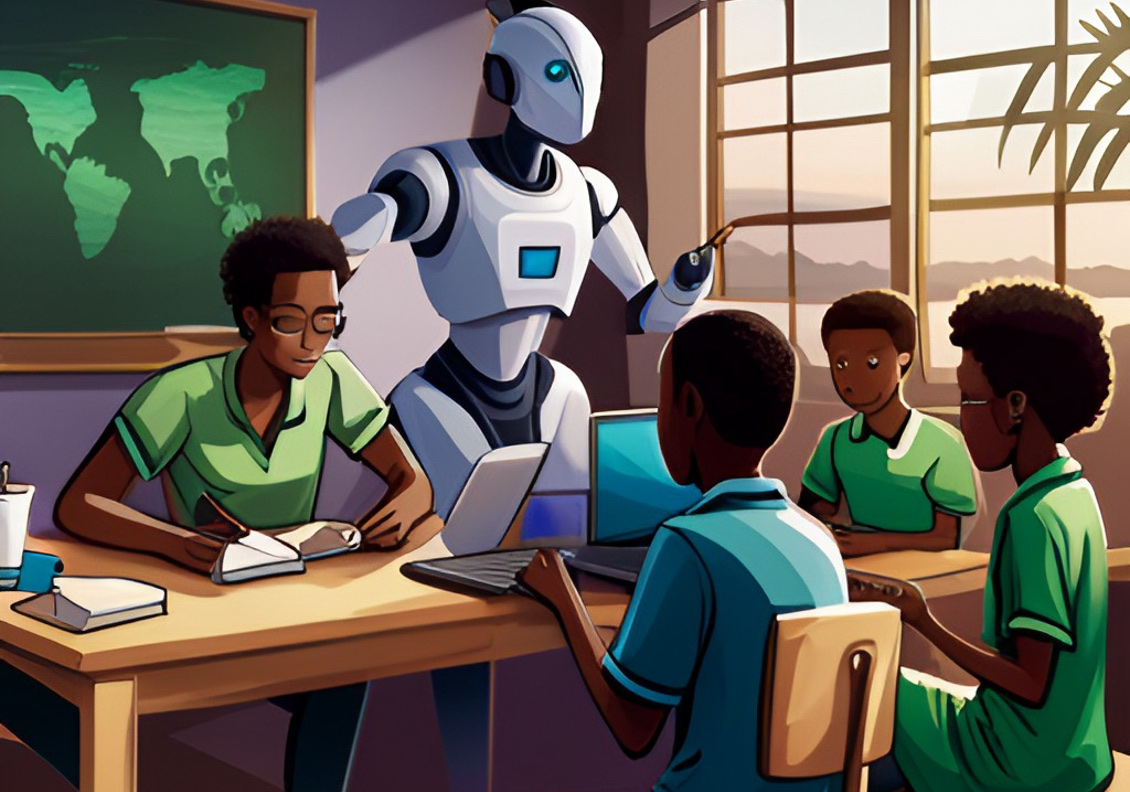Samuel Edusa MD
Unraveling AI Lingo (Part 2)
Samuel Edusa | Apr 18, 2023
 Robot teaching students (created using Stable Diffusion)
Robot teaching students (created using Stable Diffusion)
Discovering the perfect resource to quickly familiarize oneself with the ever-evolving world of AI can be a challenge, especially if you haven't been diligently tracking the field. Fear not, for I have stumbled upon a comprehensive glossary of terms that will effortlessly catapult you into the realm of AI expertise in no time!
Large Language Model (LLM)
An LLM represents a category of neural networks that acquire capabilities such as creating written content, engaging in dialogues, and crafting computer code by examining extensive textual data from the internet. The fundamental purpose is to anticipate the subsequent word in a series; however, these models have astonished specialists by mastering novel skills.
Generative AI
Generative AI refers to technology that produces various types of content, such as text, images, videos, and computer code, by recognizing patterns in extensive training data and subsequently generating unique, original material with comparable attributes. Instances of such technology encompass ChatGPT for textual content and DALL-E and Midjourney for visual elements.
Transformer Model
The Transformer model constitutes a neural network design that excels in language comprehension by simultaneously examining an entire sentence rather than processing words individually. Through a method known as self-attention, the model concentrates on specific words that hold significance in grasping the essence of the sentence.
Parameters
Parameters represent numeric values that outline the structure and conduct of a large language model, acting as hints that aid in predicting subsequent words. Contemporary systems, such as GPT-4, are believed to possess hundreds of billions of these parameters.
Reinforcement Learning
Reinforcement learning is a method that instructs an AI model to discover optimal outcomes through a process of experimentation, obtaining rewards or penalties from an algorithm contingent on its performance. This approach can be improved with the aid of human feedback on the model's effectiveness.
Hallucination
Hallucination is a widely recognized occurrence in large language models, wherein the system delivers a response that is factually inaccurate, unrelated, or illogical, due to constraints in its training data and structural design.
Bias
Bias represents a form of mistake that may emerge in a large language model when its output is influenced by the training data. As an illustration, a model might link particular characteristics or occupations with a specific race or gender, resulting in erroneous forecasts and potentially offensive replies.
Anthropomorphism
Anthropomorphism refers to the inclination of individuals to ascribe human-like traits or features to an AI chatbot. For instance, one might deduce that it possesses kindness or malevolence based on its responses, despite its inability to experience emotions, or one might perceive the AI as conscious due to its proficiency in imitating human speech.
Natural Language Processing
Natural language processing encompasses methods employed by large language models to comprehend and produce human language, involving tasks such as text categorization and sentiment assessment. These approaches typically utilize a mix of machine learning algorithms, statistical models, and linguistic principles.
Emergent behavior
Emergent behavior refers to unanticipated or unintended capabilities in a large language model, facilitated by the patterns and regulations the model acquires from its training data. Instances of this phenomenon include LLMs trained on programming and coding resources being able to generate new code, as well as creative proficiencies like crafting poetry, music, and fictional narratives.
Alignment
Efforts by AI scientists and ethicists focus on making certain that artificial intelligences operate in harmony with the principles and objectives established by their creators.
Multimodal systems
Artificial intelligences akin to ChatGPT with the capability to handle various non-textual inputs and outputs, such as images, videos, audio, and more.
Artificial General Intelligence (AGI)
AGI represents a form of artificial intelligence that equates to human intelligence, possessing the capacity to perform any task that the human mind can achieve.
References
- Artifical Intelligence Glossary - https://www.nytimes.com/article/ai-artificial-intelligence-glossary.html
